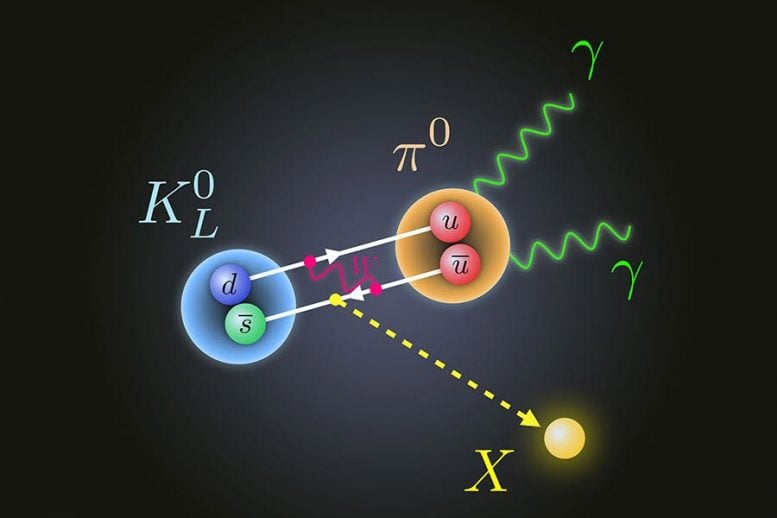
Florida State University physicists believe they have an answer to unusual incidents of rare decay of a subatomic particle called a Kaon that was reported last year by scientists in the KOTO experiment at the Japan Proton Accelerator Research Complex.
FSU Associate Professor of Physics Takemichi Okui and Assistant Professor of Physics Kohsaku Tobioka published a new paper in the journal Physical Review Letters that proposes that this decay is actually a new, short-lived particle that has avoided detection in similar experiments.
“This is such a rare disintegration,” Okui said. “It’s so rare, that they should not have seen any. But if this is correct, how do we explain it? We think this is one possibility.”
Kaons are particles made of one quark and one antiquark. Researchers study how they function — which includes their decay — as a way to better understand how the world works. But last year, researchers in the KOTO experiment reported four instances of a particularly rare decay that should have been too rare to be detected yet.
This observation violates the standard model of physics that explains the basic fundamental forces of the universe and classifies all known elementary particles.
According to their calculations, there could be two possibilities for new particles. In one scenario, they suggest that the Kaon might decay into a pion — a subatomic particle with a mass about 270 times that of an electron — and some sort of invisible particle. Or, the researchers in the KOTO experiment could have witnessed the production and decay of something completely unknown to physicists.
Researchers in Japan are conducting a special data run to confirm whether the previous observations were true detections of new particles or simply noise.
“If it’s confirmed, it’s very exciting because it’s completely unexpected,” Tobioka said. “It might be noise, but it might not be. In this case, the expectation of noise is very low, so even one event or observation is very striking. And in this case, there were four.”
Reference: “New Physics Implications of Recent Search for KL→π0ν¯ν at KOTO” by Teppei Kitahara, Takemichi Okui, Gilad Perez, Yotam Soreq and Kohsaku Tobioka, 19 February 2020, Physical Review Letters.
DOI: 10.1103/PhysRevLett.124.071801
Okui and Tobioka’s co-authors on this study were Teppei Kitahara and Yotam Soreg from the Israel Institute of Technology and Gilad Perez from the Weizmann Institute of Science in Israel.
This research is funded by the Department of Energy.
1 Comment
Standard model is definitely wrong. Something is common in all elementary particle or all elementary particles are made up of same original particle. I call it as energetic particles as given in last chapter of paper https://vixra.org/abs/1912.0171